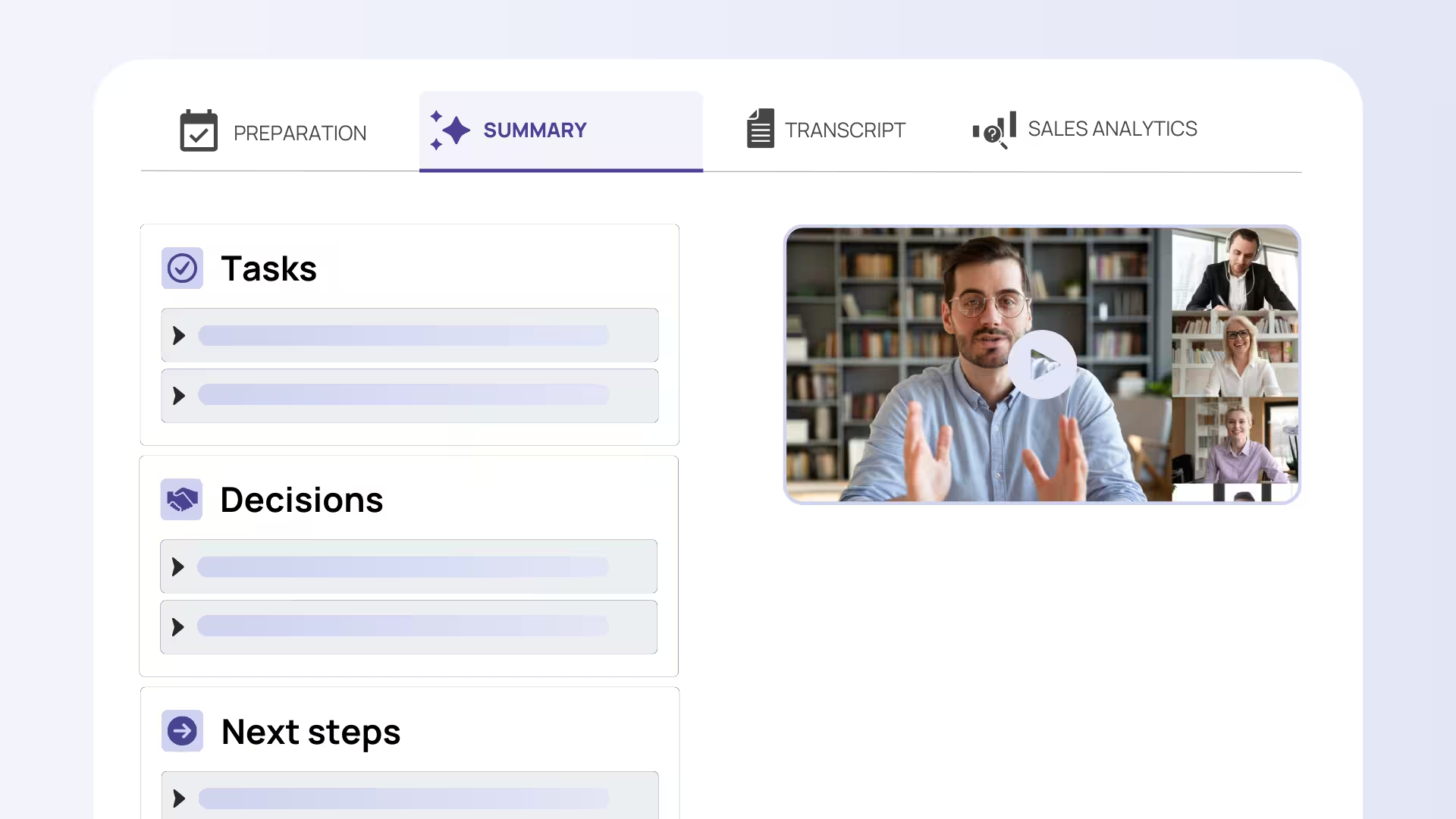Table of Contents
Monthly meetings are a cornerstone of organizational communication, but they often fall short of their potential. Poor engagement, unclear agendas, and time inefficiency plague many teams. As hybrid and remote work become standard, the challenge of conducting effective monthly meetings has only intensified. The good news? With the right approach, these regular gatherings can transform from dreaded calendar blocks into powerful drivers of team collaboration and productivity.
Understanding the Purpose and Importance of Monthly Meetings
Why Hold Monthly Meetings?
Monthly meetings serve multiple critical functions that keep teams aligned and moving forward. They provide a structured opportunity to synchronize team efforts and update everyone on progress toward shared goals. Without this regular touchpoint, teams risk working in silos, duplicating efforts, or missing important developments.
These meetings also foster communication and collaboration across departments or teams. When marketing, sales, and product teams come together monthly, they can share insights that might otherwise never surface. A sales representative's customer feedback might spark a product improvement, or a marketing campaign's unexpected success could inform future strategies.
Perhaps most importantly, monthly meetings help identify and address challenges or blockers promptly. Issues that might fester for weeks can be surfaced and resolved quickly when teams have dedicated time to discuss obstacles. This proactive approach prevents small problems from becoming major roadblocks.
Expected Outcomes of Effective Monthly Meetings
Well-run monthly meetings deliver clear alignment on priorities and deadlines. Everyone leaves knowing what matters most and when key milestones need to be reached. This clarity prevents the confusion that often derails project timelines.
These meetings also increase accountability and transparency. When team members regularly report on their progress in front of colleagues, they're more likely to follow through on commitments. The visibility creates a positive pressure that drives performance.
Enhanced team morale and motivation are additional benefits. Teams that communicate regularly feel more connected to their work and each other. They understand how their individual contributions fit into the bigger picture, which boosts engagement and job satisfaction.
Finally, monthly meetings improve decision-making through collective input. Complex challenges benefit from diverse perspectives, and regular meetings provide the forum for this collaborative problem-solving.
Preparing for a Successful Monthly Meeting
Setting a Clear, Focused Agenda
The foundation of any productive monthly meeting is a well-crafted agenda. Start by defining specific objectives for the meeting. Are you reviewing quarterly progress? Planning next month's initiatives? Addressing a particular challenge? Clear objectives keep discussions focused and productive.
Your agenda should include key components: opening context to set the stage, progress reports from relevant team members, challenge discussions to address obstacles, decision points requiring team input, and action items for next steps. This structure ensures comprehensive coverage without meandering conversations.
Best practice dictates distributing the agenda 24-48 hours ahead of the meeting. This gives participants time to prepare thoughtful contributions and gather necessary information. A rushed agenda distributed minutes before the meeting leads to shallow discussions and missed opportunities.
Identifying and Involving Key Participants
Ensuring all relevant stakeholders are invited is crucial for comprehensive discussion. Consider who needs to provide input, who needs to hear the information, and who has decision-making authority. Missing key players often means rehashing discussions or making decisions without critical perspectives.
Assign specific roles and responsibilities during meetings. Designate a facilitator to guide discussions, a note-taker to capture decisions and action items, and a timekeeper to maintain pace. These roles prevent meetings from becoming disorganized or running over time.
For remote or hybrid teams, verify technological accessibility before the meeting. Ensure all participants can join the chosen platform and have backup communication methods ready. Nothing derails a monthly meeting faster than technical difficulties.
Leveraging Technology for Preparation and Scheduling
Modern tools make monthly meeting preparation significantly easier. Use calendar invites with detailed descriptions and automated reminders to ensure attendance. Include dial-in numbers, meeting links, and agenda attachments directly in the invitation.
AI meeting assistants like Sally can streamline preparation by automatically joining meetings, transcribing discussions, and providing summaries. This technology ensures nothing important gets lost and creates searchable records for future reference.
Collaborative document platforms such as Google Docs or shared agendas maintain transparency and allow real-time updates. Team members can add agenda items, share pre-meeting thoughts, or update progress reports before the meeting begins.

Structuring and Conducting the Monthly Meeting
Recommended Meeting Framework
Start your monthly meeting with a brief welcome, clearly stating meeting objectives and reviewing prior action items. This opening sets expectations and ensures accountability for previous commitments. Spend just 5-10 minutes on this section to maintain momentum.
The main discussion sections should focus on updates, problem-solving, and open floor input. Structure these segments around your agenda items, but allow for natural conversation flow. A rigid adherence to the agenda can stifle valuable discussions.
Close by summarizing decisions made, assigning specific tasks to individuals, and clarifying deadlines. This ensures everyone leaves with clear next steps and ownership of action items. The closing should take 10-15 minutes and leave no ambiguity about what happens next.
Balancing Structure with Flexibility
Time-boxing agenda items maintains pace while allowing creative input. Allocate specific time slots for each topic, but be willing to adjust if an important discussion emerges. The key is maintaining overall meeting duration while being flexible with individual segments.
Use "parking lot" methods to capture off-topic but valuable ideas for later discussion. Write these items on a whiteboard or shared document, then schedule separate time to address them. This technique keeps the main meeting focused while ensuring good ideas aren't lost.
Consider incorporating open-ended questions or breakout sessions for deeper collaboration. Sometimes the most valuable insights come from unstructured discussions where team members can explore ideas freely.
Engaging Participants Actively
Effective facilitation techniques keep everyone involved. Try round-robin sharing where each person provides updates, use targeted questions to draw out specific expertise, or conduct live polls for quick decision-making. These approaches prevent meetings from becoming one-person presentations.
Encourage inclusivity by ensuring all voices are heard and practicing cultural sensitivity in communication styles. Some team members are naturally vocal, while others prefer to contribute in writing or smaller groups. Adapt your approach to accommodate different communication preferences.
Manage virtual fatigue through interactive elements and regular breaks. Online meetings can be particularly draining, so incorporate activities that require active participation and don't hesitate to pause for brief breaks during longer sessions.

Beyond the Meeting – Follow-Up and Continuous Improvement
Documenting Outcomes and Assigning Action Items
Write clear, concise meeting minutes that capture decisions and responsibilities. Focus on outcomes rather than detailed conversation summaries. Include who is responsible for what, when tasks need completion, and any resources or support needed.
Utilize transcription and summary tools like Sally for accurate records. These AI-powered solutions can automatically generate meeting summaries, extract action items, and even integrate with project management tools to create tasks directly from meeting discussions.
Share minutes promptly to reinforce accountability. Send summaries within 24 hours while the discussion is fresh in everyone's minds. Quick turnaround demonstrates professionalism and helps maintain momentum on action items.
Gathering Feedback to Improve Future Meetings
Implement regular feedback collection through post-meeting surveys, quick polls, or dedicated feedback sessions. Ask specific questions about meeting effectiveness: Was the agenda clear? Did you feel engaged? Was the time well-used? Were the outcomes valuable?
Use this feedback to continuously improve. If participants consistently report meetings run too long, tighten the agenda. If engagement is low, try new facilitation techniques. Regular feedback creates a culture of continuous improvement.
Adapting Monthly Meetings Over Time
Respond to changes in team dynamics, project phases, or external factors. A startup moving from development to launch phase might need different monthly meeting structures. Similarly, team growth or organizational changes should prompt meeting format adjustments.
Maintain flexibility to shift meeting frequency or format as needed. Some periods might require bi-weekly check-ins, while others might work better with quarterly deep dives. The key is staying responsive to team needs rather than rigidly following established patterns.
Ensure continuous alignment with organizational goals and team culture. As priorities shift and teams evolve, monthly meetings should adapt accordingly. Regular evaluation ensures these meetings remain valuable rather than becoming bureaucratic obligations.
Maximizing the Impact of Your Monthly Meetings
Monthly meetings play a critical role in driving productivity and collaboration when done well. The combination of clear agendas, active engagement, cultural awareness, and technology integration creates powerful opportunities for team alignment and progress.
The investment in improving monthly meeting effectiveness pays dividends in team performance, morale, and results. Tools like Sally can automate the administrative burden, while thoughtful preparation and facilitation create the conditions for meaningful collaboration.
Remember that well-run monthly meetings are more than administrative requirements—they're strategic tools for empowering teams and achieving sustained success. Start with small improvements, gather feedback, and continuously refine your approach. Your team will thank you for the investment in their time and professional growth.

Try meeting transcription now!
Experience how effortless meeting notes can be – try Sally free for 4 weeks.
Test NowOr: Arrange a Demo Appointment

.avif)



